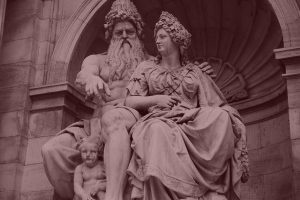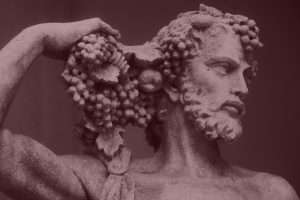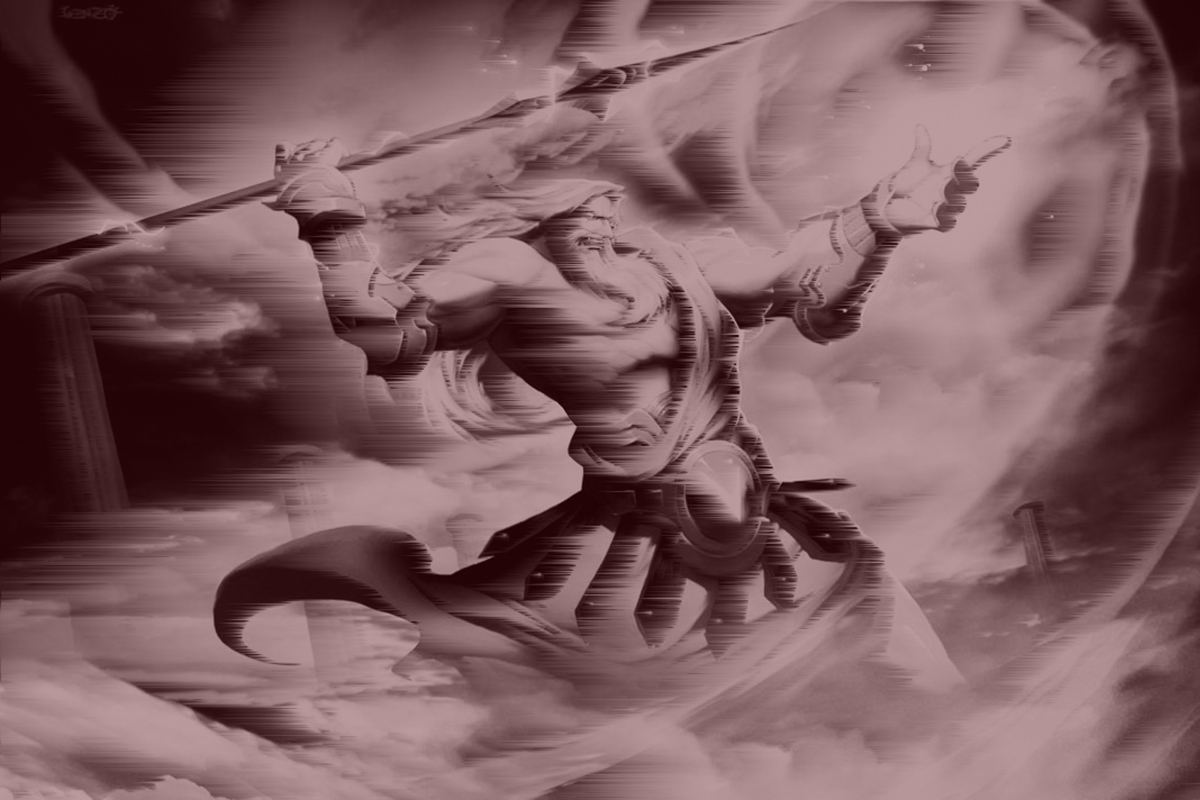Thanks to linguists, Nis was nicknamed “the city of fairies”. In his dictionary of Thracian names, the Bulgarian linguist Dechev advocates the opinion that Naissus is a Thracian word. Dechev explains the word Naissus with the help of the Indo-European root snau = teći, ie related forms that mean nymphs from a spring, spring or liquid. This etymology is also accepted by other eminent linguists. The described interpretation has gained great popularity, and nymphs or fairies are becoming a symbol of the city on the Nisava. Who were the fairies from Nis (Naissus, Nisos)? Slovenian legends do not tell us much about it. However, in ancient Greek legends, a legendary place of almost the same name, Nisa, appears. The legendary Nisa was inhabited by nymphs called Nisijade, who are known to have been the nannies of the minor god Dionysus. It is believed that the Greeks tried to explain the foreign name of the imported deity Dionysus to them with the legend of Nis. Interpreting that this name means God from Nisa, they set out in search of the place of his origin. However, along with the cult of Dionysus, the legend of Nisa may have been imported into Greece. Regardless of the origin of this legend, there are numerous attempts to locate Nisa.
 Hesychius of Alexandria, a lexicographer from the 5th century, gives an overview of the locations of the mythical Nisa. The list of Hesychius includes: Arabia, Ethiopia, Egypt, Babylon, the Red Sea, Thrace, Thessaly, Cilicia, India, Libya, Lydia, Macedonia, Naxos, Pangajos (a mythical island south of Arabia) and Syria. So, according to Greek authors, Nisa could be found anywhere within the world known to them. However, the earliest mention of Nisa is in the Iliad. According to the (also mythical) poet Homer, the mythical Nisa is located in or around Thrace. This is in accordance with the probable Thracian origin of the cult of the god Dionysus. As Nis is located on the western borders of ancient Thrace, it is not unfounded to declare it a potential location of its namesake from the legends, Nisa.
Hesychius of Alexandria, a lexicographer from the 5th century, gives an overview of the locations of the mythical Nisa. The list of Hesychius includes: Arabia, Ethiopia, Egypt, Babylon, the Red Sea, Thrace, Thessaly, Cilicia, India, Libya, Lydia, Macedonia, Naxos, Pangajos (a mythical island south of Arabia) and Syria. So, according to Greek authors, Nisa could be found anywhere within the world known to them. However, the earliest mention of Nisa is in the Iliad. According to the (also mythical) poet Homer, the mythical Nisa is located in or around Thrace. This is in accordance with the probable Thracian origin of the cult of the god Dionysus. As Nis is located on the western borders of ancient Thrace, it is not unfounded to declare it a potential location of its namesake from the legends, Nisa.
What do we know about Dionysus and his relationship with Nis?
Dionysus arose from adultery. Dionysus’ father was the supreme god Zeus and his mortal mother Semela.
He was born in Thebes, although the place of his birth is also considered to be Naxos, Crete, Elis, Theos and Eleuthera. When he was about to come into the world, Zeus’ jealous wife Hera decided to kill him. She visited her husband’s mistress, Semele, in the form of an old nanny, and persuaded her to ask Zeus to show himself to her at least once in all his power and majesty. The highest god in his self-love fulfilled Semela’s wish and appeared to her in the glow of his lightning, followed by the roar of thunder. Exactly what Hera wanted happened: a lightning bolt set fire to the royal palace of Thebes, and the flames caught Semele, who gave birth to a premature baby in fear of death. But Zeus intervened. He left his mistress to her fate, but he built a wall of thick ivy around his son, which saved him from the flames. When the fire subsided, he pulled the child out of hiding and sewed it into his thigh to fully develop. When Dionysus was “born for the second time”, Zeus handed him over to the god Hermes to take care of him.
 Hermes was not married, and as he was constantly on the road as a messenger of the gods, he did not have time to raise the young Dionysus, so he handed him over to Semela’s sister Ina, the wife of the Orchomenus king Atamant. When Hera found out that Ina and Atamant had accepted Dionysus, she sent madness at Atamant, in order to kill the boy in a fit of rage. However, the king killed only his children and wife, because Hermes intervened at the last minute and saved Dionysus from death. He took him to the above-mentioned Nis and entrusted him to the nymphs Nisijad, who hid him in a deep cave with an entrance overgrown with vines, and raised him in spite of all Hera’s pranks and traps. It was here that Dionysus first tasted the wine with which he then intoxicated himself, his guardians and his companions with force and satire. From there, Dionysus brought the first vine seedlings to the people. He gave them, as a sign of gratitude for the hospitality, to the Athenian shepherd Icarus and taught him to make a drink from grapes, and then, by the will of Zeus, he became the god of that drink.
Hermes was not married, and as he was constantly on the road as a messenger of the gods, he did not have time to raise the young Dionysus, so he handed him over to Semela’s sister Ina, the wife of the Orchomenus king Atamant. When Hera found out that Ina and Atamant had accepted Dionysus, she sent madness at Atamant, in order to kill the boy in a fit of rage. However, the king killed only his children and wife, because Hermes intervened at the last minute and saved Dionysus from death. He took him to the above-mentioned Nis and entrusted him to the nymphs Nisijad, who hid him in a deep cave with an entrance overgrown with vines, and raised him in spite of all Hera’s pranks and traps. It was here that Dionysus first tasted the wine with which he then intoxicated himself, his guardians and his companions with force and satire. From there, Dionysus brought the first vine seedlings to the people. He gave them, as a sign of gratitude for the hospitality, to the Athenian shepherd Icarus and taught him to make a drink from grapes, and then, by the will of Zeus, he became the god of that drink.
When Dionysus grew up, the jealous Hera struck him with madness, which drove him to start wandering around different parts of the world. In Phrygia, the goddess Cybele, known in Greece as Rhea, healed him and taught him the sacred rites, and he set out on a journey through Asia, teaching people how to grow and cultivate vines. The most famous of his travels is the expedition to India, which is claimed to have lasted several years. After his triumphant return, he began publishing his teachings in Greece. But several princes opposed him in this attempt, fearing that his teachings would bring with them riots and madness (King Pentheus and Lierg)
Dionysus is on the right side of Zeus on Olympus and is given many epithets: Megapenthes (“the one of great suffering”), Kissos (“ivy”), Oinops (“wine”).
Let’s go back to Dionysus’ nannies, Nisiades. Although there are different versions of the legends in Nisijadda, two groups of nymphs are most often classified: Hijade and Pleiades.
The legends describe seven Hyades, nymphs who bring rain:
- Ambrosia
- Eudora
- Fesila
- Coronida
- Polyx
- Fairy
- Diona
The sisters of the Hyades were the Pleiades, of whom there are also seven:
- Maya
- Mereopa
- Elektra
- Tajgeta
- Alkiona
- Kelena
- Steropa
These fourteen nymphs, Nisijada lived in Nis. As a reward for raising his son Dionysus, Zeus turned them into stars. Both the Hyades and the Pleiades are in the constellation of Taurus. The Hyades form the head and the Pleiades the Taurus tail.
Hyades are considered stars that bring rain – at the time of their appearance in November and May, the rainy season begins in Greece.
According to some myths, the Pleiades brought ragweed to the gods from the countries in the West, and their Greek name “Peleiades” or doves corresponds to that. According to other interpretations, their name derives from the word “Pleo” or to sail, to sail a ship, because their ascent to the firmament signified a favorable time for sailing.
Dionysus Cave
If Nisa is Nis, then where is the cave where young Dionysus grew up under the supervision of a nymph? Near the town of Nis, in the area of the village of Cerje, there is a cave of extraordinary beauty, which the locals call Provalija and speleologists call Cerjanska pećina. So far, 6025 m of corridors have been explored, but it is assumed that this underground city is about 20 km long. Cerjan’s cave, similar to Diosnis’s cave, had a hidden entrance which was widened with dynamite in the twentieth century. What makes this cave special and sets it apart from others is the diversity and preservation of morphological and hydrological forms, then the diversity of shapes, sizes, colors and composition of cave jewelry in the form of stalactites and stalagmites, helactites, ornate saliva, wavy draperies, cave corals, crystal flowers , cave outgrowths … The monumentality of cave canals and halls (some of them are more than a hundred meters long, twenty to thirty wide and forty high) is especially amazing.
In any case, the magnificently decorated Cerjan cave represents a place where Dionysus and his nanny nymphs could hide from the angry and jealous Hera for years.




